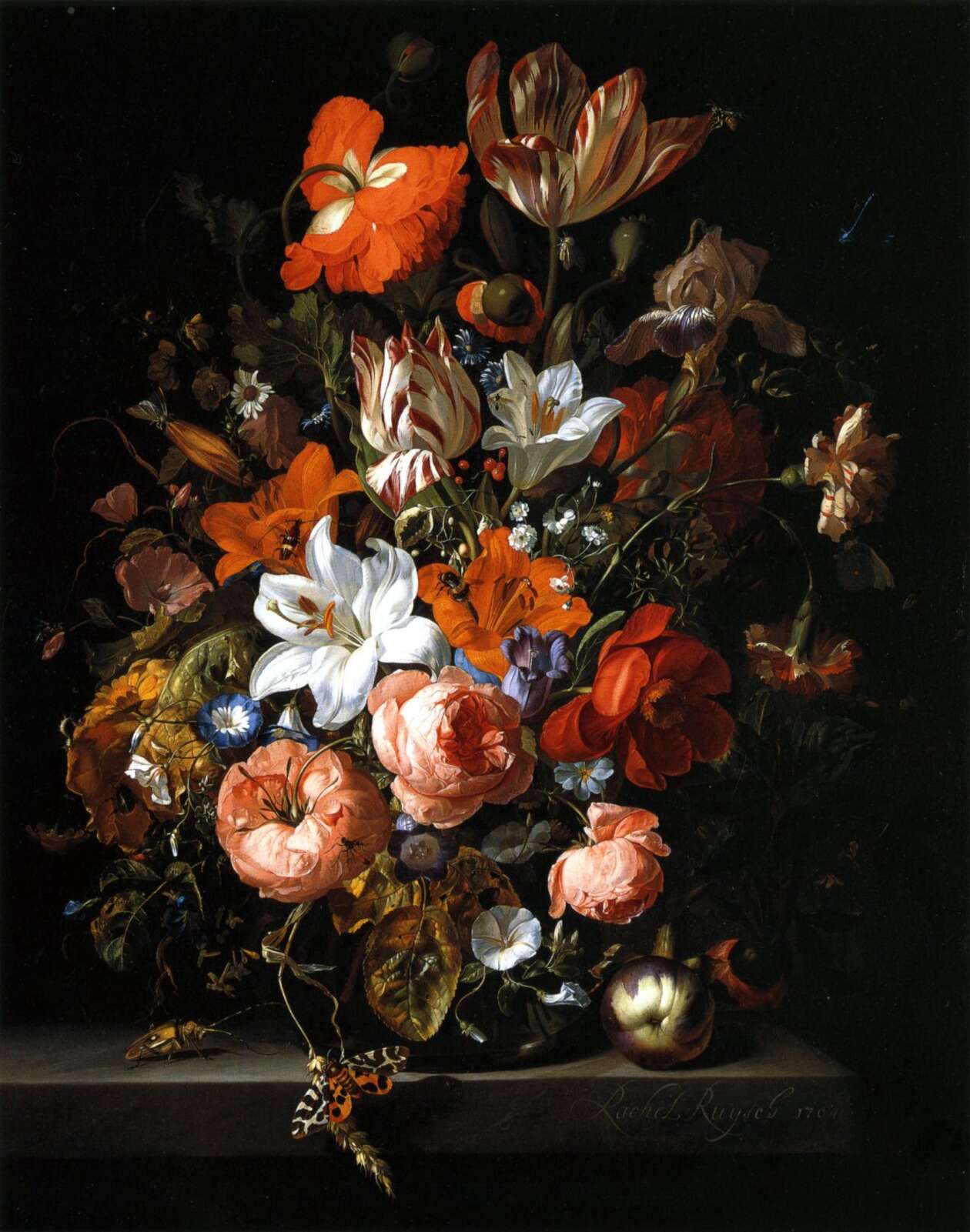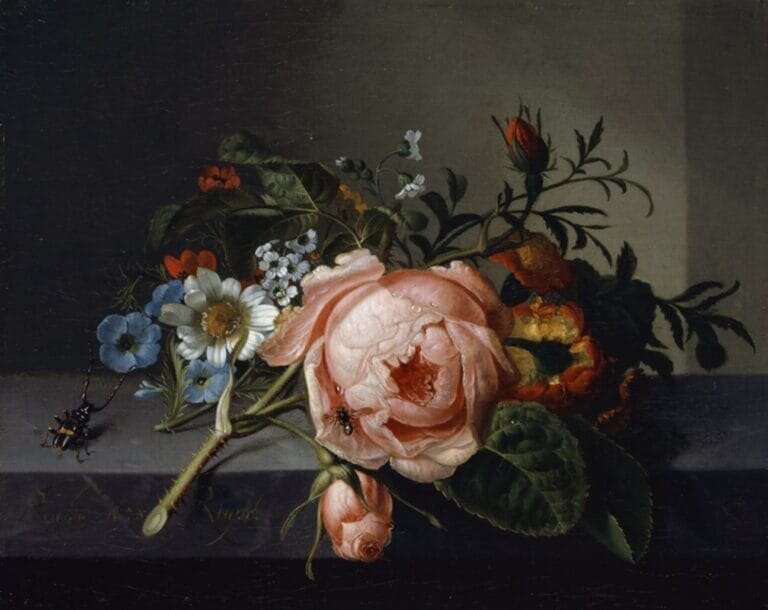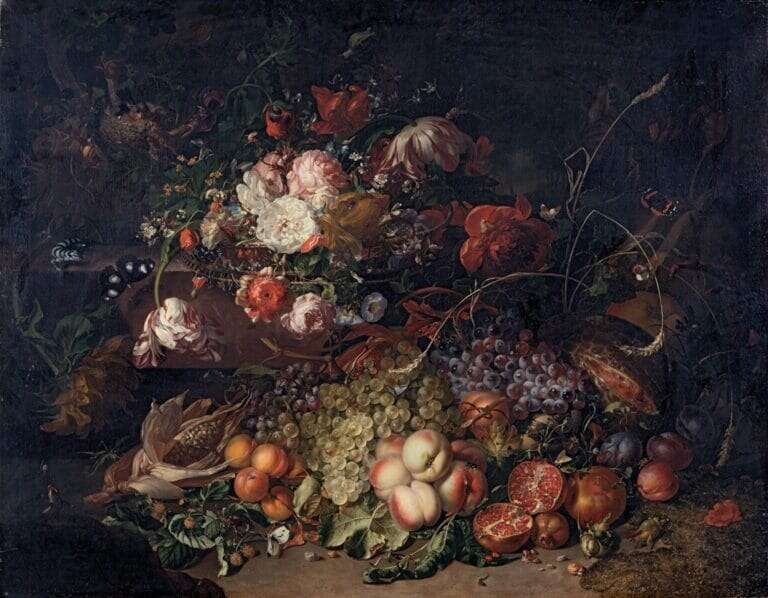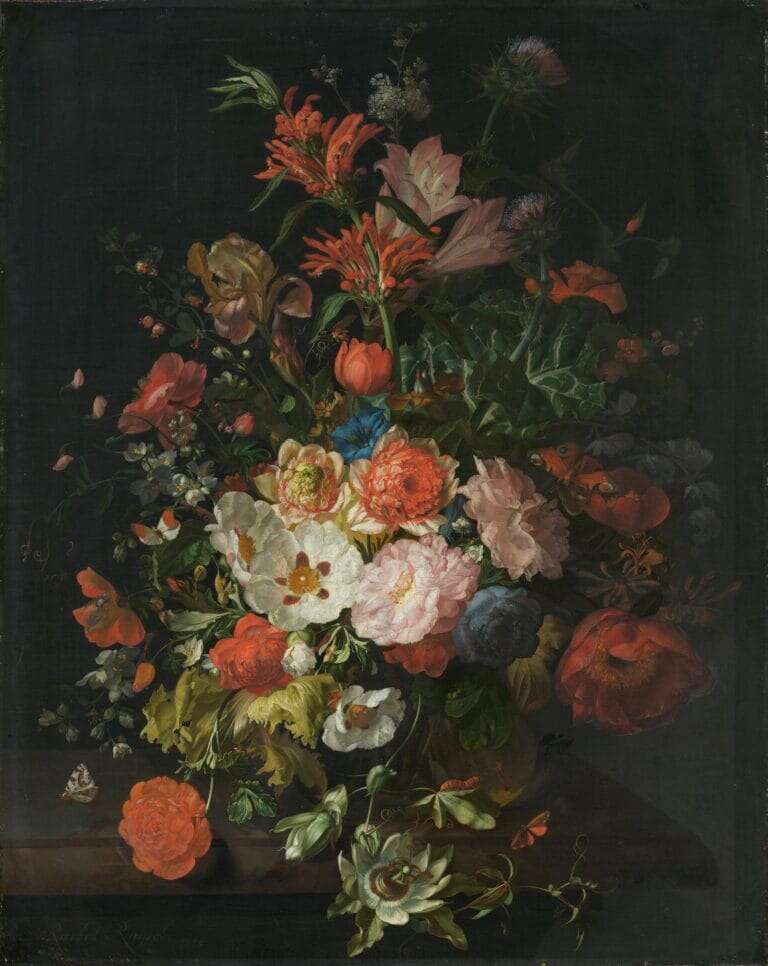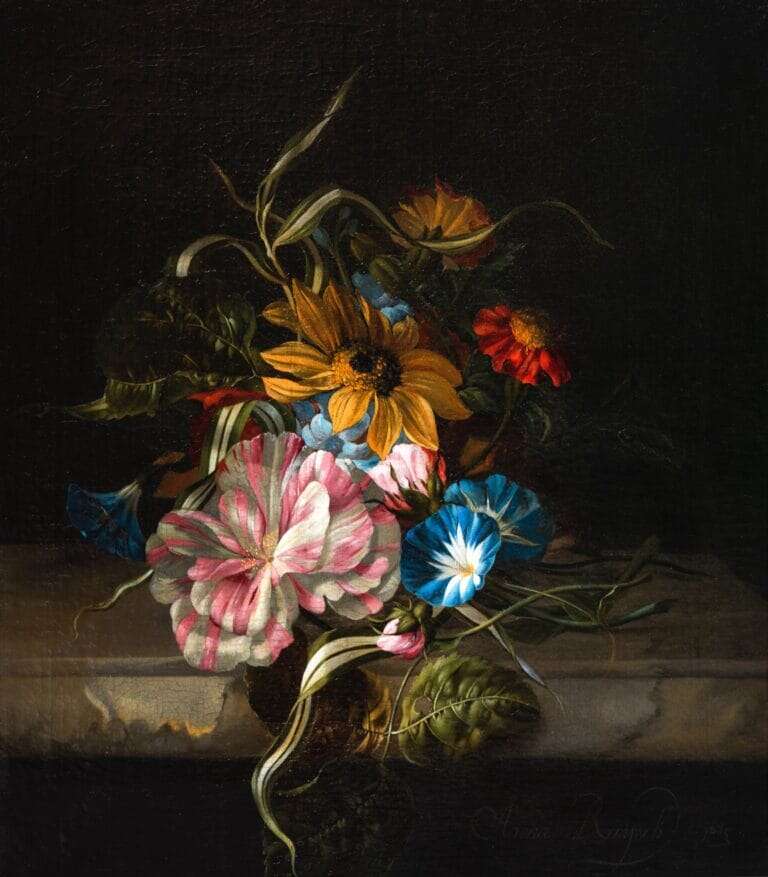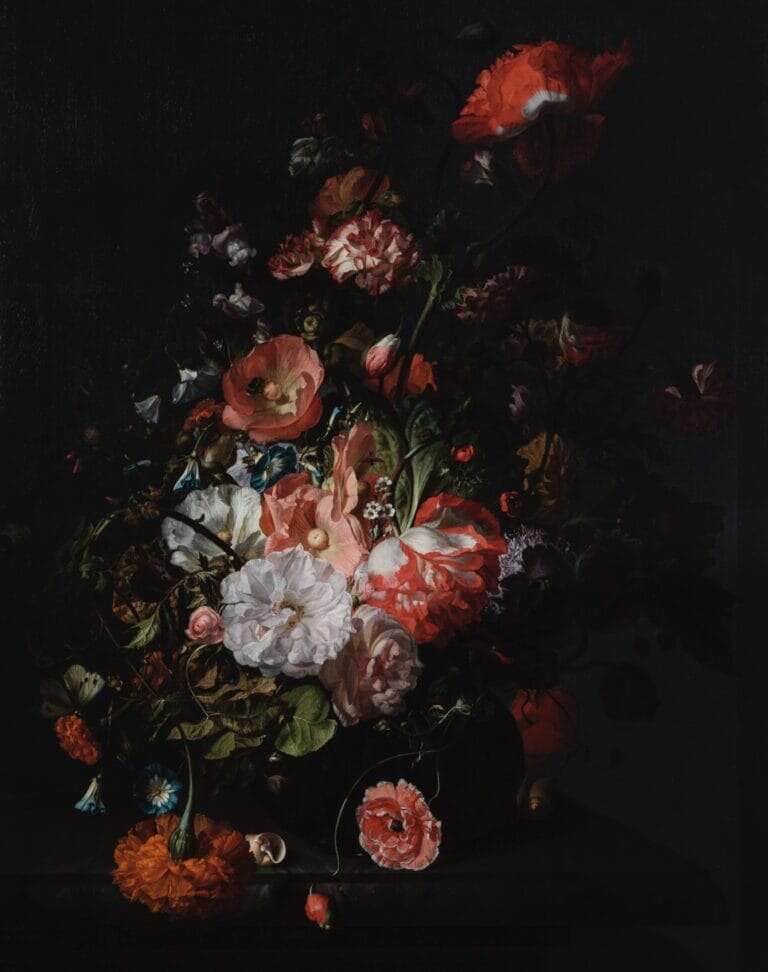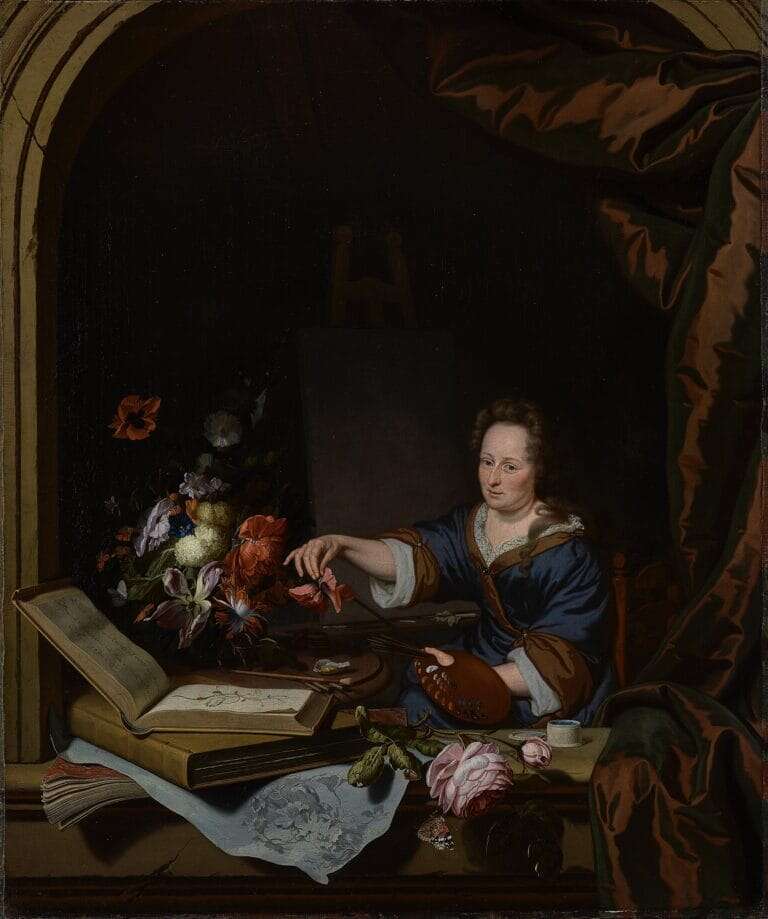Rachel Ruysch (1664–1750), a prominent Dutch Golden Age painter, is finally receiving her first major U.S. exhibition, “Rachel Ruysch: Nature into Art”. Renowned for her exquisite floral still lifes, Ruysch’s work seamlessly blends art and science, reflecting her deep understanding of botany. The exhibition, co-organized by the Toledo Museum of Art, the Museum of Fine Arts in Boston, and the Alte Pinakothek in Munich, showcases over 90 international loans, including 48 of her most significant paintings. This retrospective offers a comprehensive look into Ruysch’s seven-decade career, highlighting her evolution as an artist and her contributions to the art world.
Born into a family with strong scientific ties — her father was a professor of anatomy and botany — Ruysch began painting at 15, using her father’s collection of specimens as inspiration. Her unique ability to merge scientific observation with artistic mastery led to her becoming the first woman admitted to The Hague Painters’ Society, Confrerie Pictura. She was also appointed court painter in Düsseldorf to Johann Wilhelm, Elector Palatine, and rose to become one of the highest-paid artists of her time. Despite her acclaim during her lifetime, her work was largely overlooked in the centuries following her death, making this exhibition a significant event in reintroducing her legacy to contemporary audiences.
“Rachel Ruysch: Nature into Art” not only celebrates the artist’s technical prowess but also delves into the cultural and historical contexts of her work. Visitors will gain insight into how Ruysch’s paintings reflect the 17th-century Dutch fascination with flowers and gardening, as well as the vanitas genre, which used still-life imagery to convey the transience of life. The exhibition runs from April 12 to July 17 in Toledo before moving to Boston on August 23, offering a rare opportunity to experience the brilliance of an artist who masterfully combined beauty, science, and symbolism in her work.
More info: Wikipedia (h/t: Colossal).
